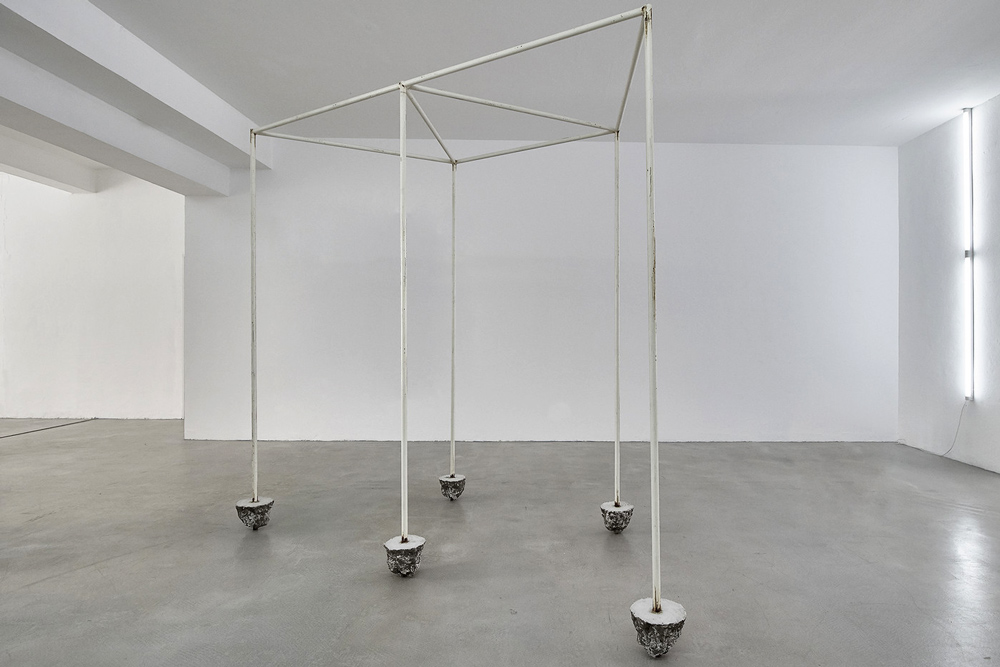
FUTURE FRAGMENTS OF PAST FORMS (#1)
2014
Steel, varnish, rust, concrete, soil
Ø 208 x 125 cm

FUTURE FRAGMENTS OF PAST FORMS (#2)
2015
Steel, varnish, rust, concrete, soil
220 x 130 x 240 cm
2015
Steel, varnish, rust, concrete, soil
220 x 130 x 240 cm

FUTURE FRAGMENTS OF PAST FORMS (#3)
2017
Steel, varnish, rust, concrete, soil
60 x 60 x 360 cm
2017
Steel, varnish, rust, concrete, soil
60 x 60 x 360 cm
[...] Similar concrete relics appear in one of the sculptural pieces Future Fragments of Past Forms #1 (2014), for which the artist recreated concrete foundations, arranged them in a circle, and connected them with another metal pipe—the result looks like a circular handrail or a kind of jungle gym ripped from its moorings; or one might think of the skeletal structure as the framework for a tent, a sort of primitive hut for the nomadic subject, small and easily movable from one site to another, a form that seems to have been uprooted but is in fact not predestined to put down truly solid roots. The functional indeterminacy opens up a space for possible imaginary applications. The artist makes a sculpture out of found elements—or we might say, the bricoleur constructs a provisional shelter. Such sculptures are nomadic because they are characterized by the potentiality of the temporary abode, but also because their functionality can shift—they are hybrid forms between a purposeless, dysfunctional, formalist sculpture and a possible scaffold for a serviceable dwelling. Walkowiak thus accords to any form an agency, a capacity that renders it an object, a thing, rather than letting it be mere “pure” form.
Text: Sabine Folie, Vienna 2016
Photos: Julius Unterberger, Easy Upstream, Lisa Rastl